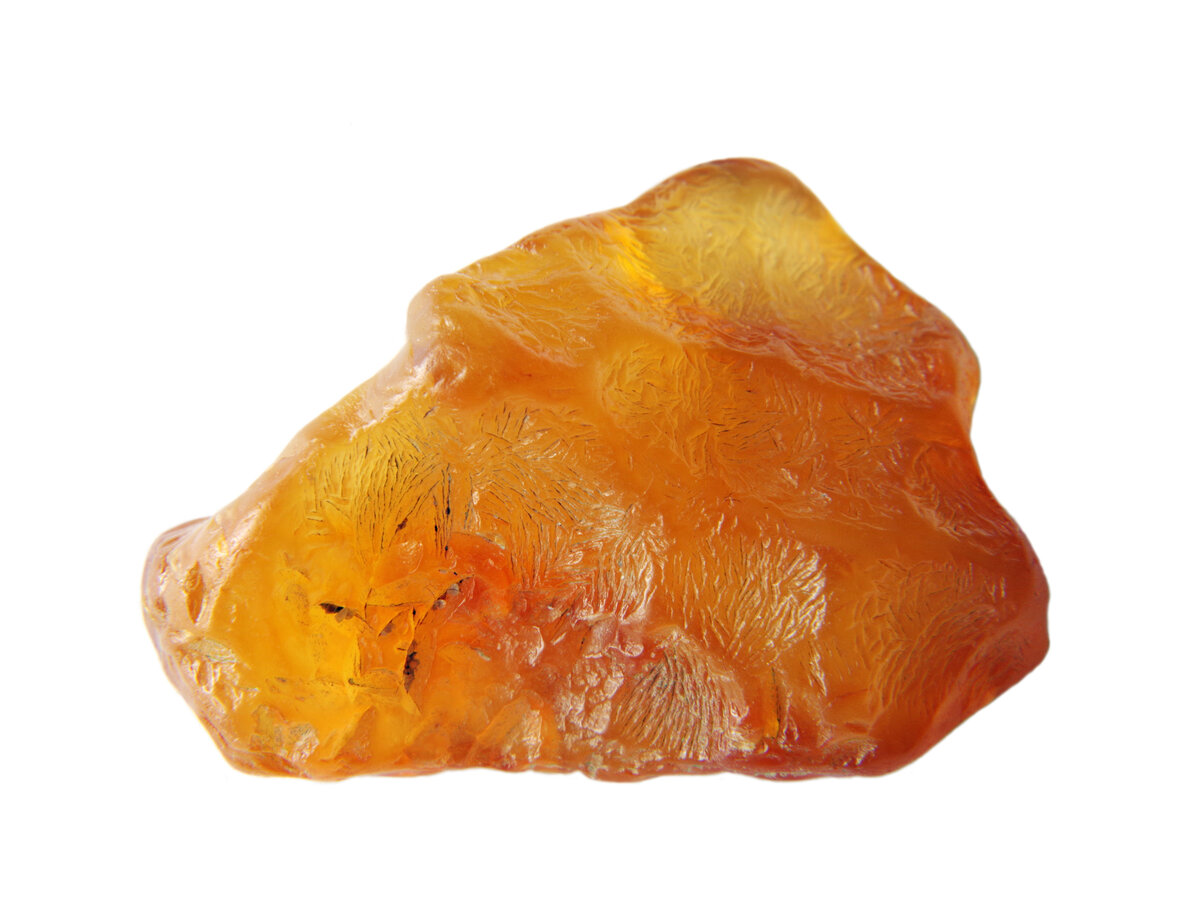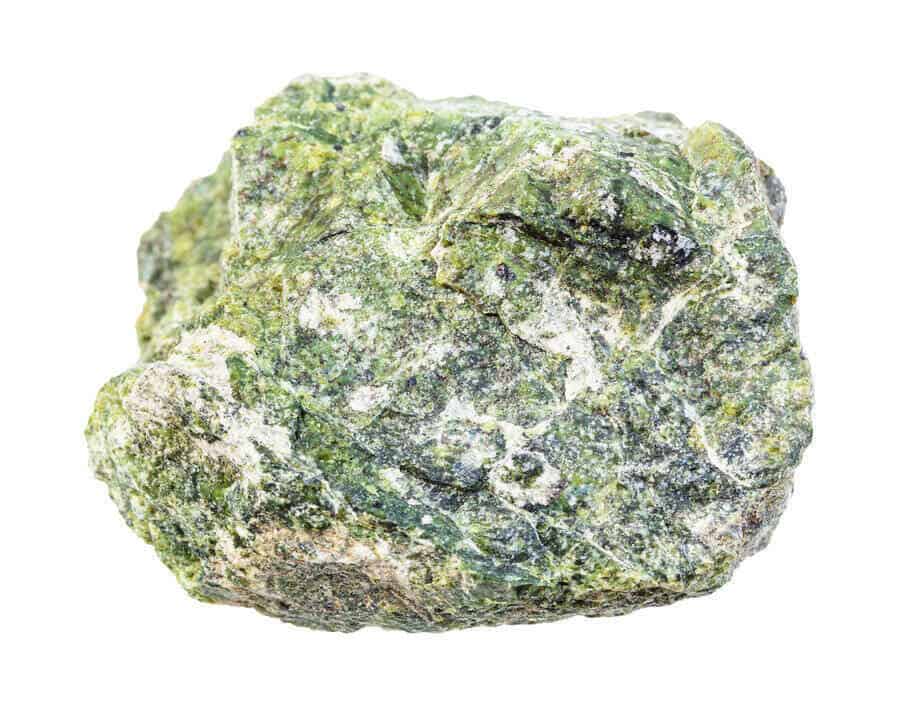Maryland is a pretty unique state for rockhounding. While you can’t find the types of rocks and gemstones that typically attract rock collectors, there is more than enough high-quality material here to keep a rockhound busy for quite a while
Rockhounds in Maryland will probably be most interested in the gem-grade varieties of serpentine that can most commonly be found in the northeast corner of the state in an old well-known quarry district. The serpentine here is generally high-grade material including sub-types like picrolite and williamsite, both of which are highly sought after by collectors for their lapidary qualities
Perhaps the biggest obstacle to rockhounds in Maryland is the relative lack of public lands available to collectors. Almost all of the best collecting spots (quarries and mines, in particular) are privately owned, so advance permission to collect is a must.
The best places to rockhound in Maryland are old quarries, particularly in the State Line Pits in Cecil and Hartford Counties where gem-grade serpentine is found. The Blue Ridge mining district is popular for copper minerals, and beaches along the Chesapeake Bay are known for shark teeth and quartz crystals.
| State Symbols | |
|---|---|
| State Mineral | — |
| State Rock | — |
| State Gemstone | River Stone Agate |
| State Fossil | Ecphora gardnerae |

Rocks and Minerals Found in Maryland
Maryland has quite an eclectic variety of rocks and minerals. Aside from the common agates, jasper, and quartz which can be found to some degree all over the country, Maryland is really known for its high-quality varieties of serpentine which have been quarried extensively.
Williamsite, a gem-quality variety of serpentine, is highly sought after by collectors for its lapidary qualities. It is generally a very attractive shade of green, slightly translucent, and makes for nice cabochons.
In general, Maryland is pretty lacking in gemstones other than serpentine, but in certain locations you can find minerals like tourmaline, calcite, mica, and feldspar. The state gemstone, river stone agate,’ can be found in stream gravels predominantly in the northeastern part of the state. This variety of agate has a distinct red to yellow coloring and is mostly lacking the characteristic banding seen in many other popular agate types.
The most commonly found and collected rocks and minerals in Maryland are:
- Serpentine
- Quartz
- Williamsite
- Chromite
- Tourmaline
- Agate
- Petrified wood
- Calcite
- Feldspar
- Mica

If you’ve already found a rock and you’re not sure what it is, I would highly recommend checking out my Practical Rock Identification System. This bundle of information includes a book, videos, and online tools. It is, simply put, the most comprehensive and easy-to-understand rock identification system you’ll find anywhere.
You can also read through my free rock identification guide and mineral identification guide which are filled with useful information and tools.
Where to Rockhound in Maryland
Important Disclaimer: I have not been to these locations myself, and I do not know if they are currently open for collecting. Use this resource as a guide to get you started. Follow posted signage and always get permission from the landowner to collect.
Through quite a bit of research and cross-referencing of available literature, I have compiled this list of some prospective locations in Maryland which I would recommend to people looking to do some rockhounding. These are mostly comprised of beaches, old mining prospects, washes, streams, and historically known rock and mineral collecting sites. For additional reading, I’d highly recommend these books you can find on Amazon:
Please remember that rock collecting locations are constantly changing. Specimens may become depleted from other collectors, the location may have been built on or altered, locality information in literature may be inaccurate, and property ownership may have changed hands. Joining up with a local rockhounding club for a group trip can often get you access to otherwise off-limits locations like privately owned mines and quarries. There are many rockhounding clubs in Maryland so you can most likely find one you like nearby.
I have tried to take care not to list locations within National Park boundaries since collecting is illegal there, but please remember that it is up to you to make sure you have permission to collect wherever you are. Even if you are on land that is generally open for public use there may be privately owned mining claims inside those boundaries and you’ll need to get permission to collect on that location.
Though there are many locations listed here, this list is far from exhaustive. A location’s listing here is not a guarantee of accuracy. Be safe, never go underground, and make sure to get permission from the landowner to search for and collect specimens.
If you’re planning on heading to the field, make sure you have all the gear you’ll need! To get started, you can check out my recommended gear page which contains my full reviews for every Geologist’s favorite rock hammer and the best hiking backpack I’ve ever owned.
Maryland Rockhounding Sites
With its varied topography and geology, Maryland presents more than enough rockhounding sites to keep a collector busy for quite some time. The most notable locations are in the northeastern corner of the state in Cecil and Hartford Counties as part of the State Line Pits.
This region straddling the Susquehanna River is famous for its high-quality serpentine, brucite, williamsite, and associated gems and minerals. If you are collecting in the area be sure not to limit yourself to Maryland’s borders, as this district extends across the state line well into Pennsylvania.
As a general rule, if you’re searching through the tailings of these old pits you will do best to avoid the more prominently exposed tailings and instead venture into the surrounding brush. Many of the old tailing piles have been grown over and tend to be less thoroughly picked over, giving you a better chance of finding quality material if you’re up for the additional challenge.
Further west, the Blue Ridge mining district is well known for its production of copper minerals, particularly malachite. Many of the old mines have since been reclaimed and build over, but there are still plenty of mine tailings that you can sort through to find worthwhile material.
If you’re looking for fossils or shark teeth in Maryland then your best bet is to search in sands along the Chesapeake Bay and its tributaries, as well as the Atlantic Ocean beaches. On the beaches near Ocean City you can find nicely terminated clear quartz crystals known as ‘Cape May Diamonds’ which have weathered out of strata in New Jersey and transported by tidal currents.
Most of the best rockhounding sites in Maryland are privately owned. Many are commercially operated quarries, and gaining permission to collect on any of these properties is, as always, absolutely essential. Some are open to the public for collecting at select times of the week, often on weekends.
Maryland Rockhounding Laws & Regulations
One of the most common questions rockhounds have is whether or not they are allowed to collect at a certain location. It is the responsibility of each rockhound to obtain permission from a landowner to search and/or collect on a piece of property.
The ownership and status of land can and does change frequently, making it impossible to document accurate information for every location on this page. However, I have compiled a list of resources here so that you may investigate and obtain permission for any locations (found here or elsewhere) for yourself.
Public Land Resources
I have written entire articles which cover the rockhounding laws and regulations for nearly every type of public land you can think of. I encourage you to check them out if you are curious about the legalities of rock and mineral collecting.
- Rockhounding on Public Land: Laws and Regulations
- Can You Collect Rocks in State Parks? All 50 States Answered
To determine what type of public land a particular location is on, I would recommend starting with the Maryland Department of Natural Resources public lands maps.
Private Land Resources
As with most states, each county in South Dakota will have records of who owns each piece of property. You can also usually get the landowner’s name and address by visiting the county records office. I would probably start by checking with the Maryland Department of Assessments and Taxation and getting whatever contact information you can for the landowner.
Sources & Further Reading
The locations and information contained in this article are primarily derived from academic papers, online resources, and other outside sources. If you would like to read some of the source material for yourself I have listed them below. The majority of these locations are my interpretation of Robert Beste’s A Location Guide for Rock Hounds in the United States. Other sources include:
- mindat.com
- Maryland Department of Natural Resources
- Maryland Geological Survey
- Maryland Geologic Maps
- Massachusetts Mineral and Fossil Localities, Gleba
This post is part of my State-By-State Rockhounding Guides series. Please check out more states for thousands of additional sites to go rockhounding!
